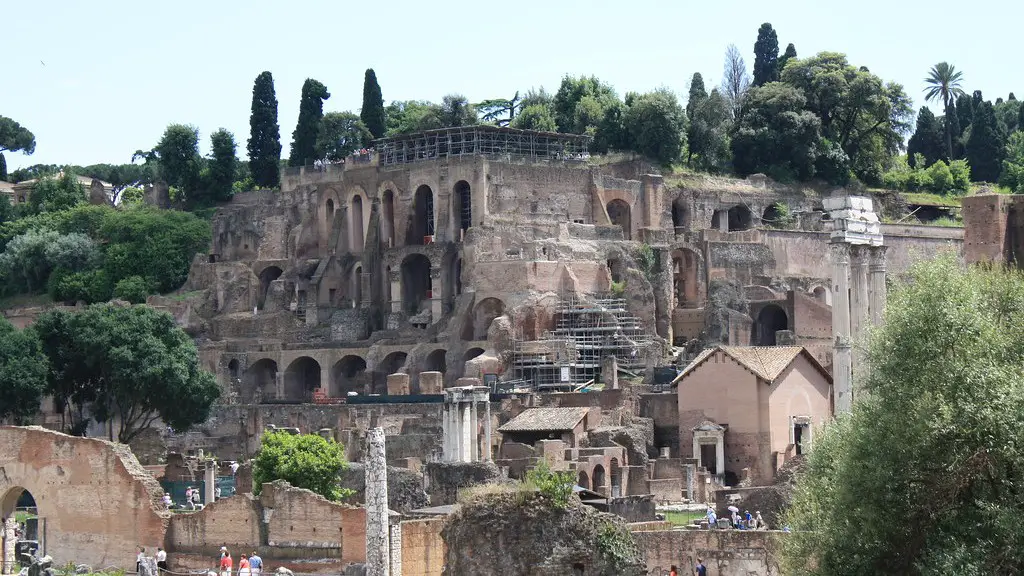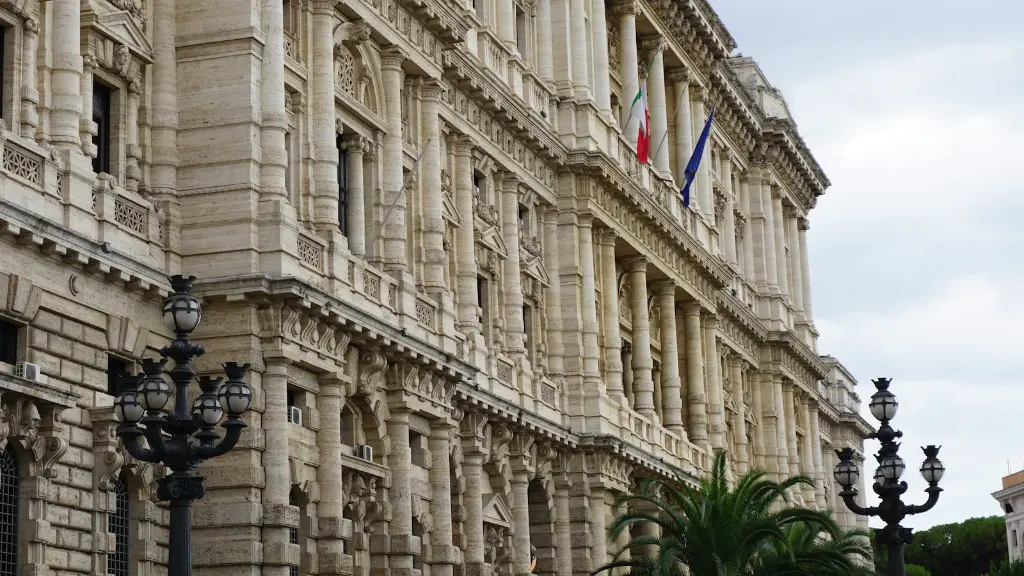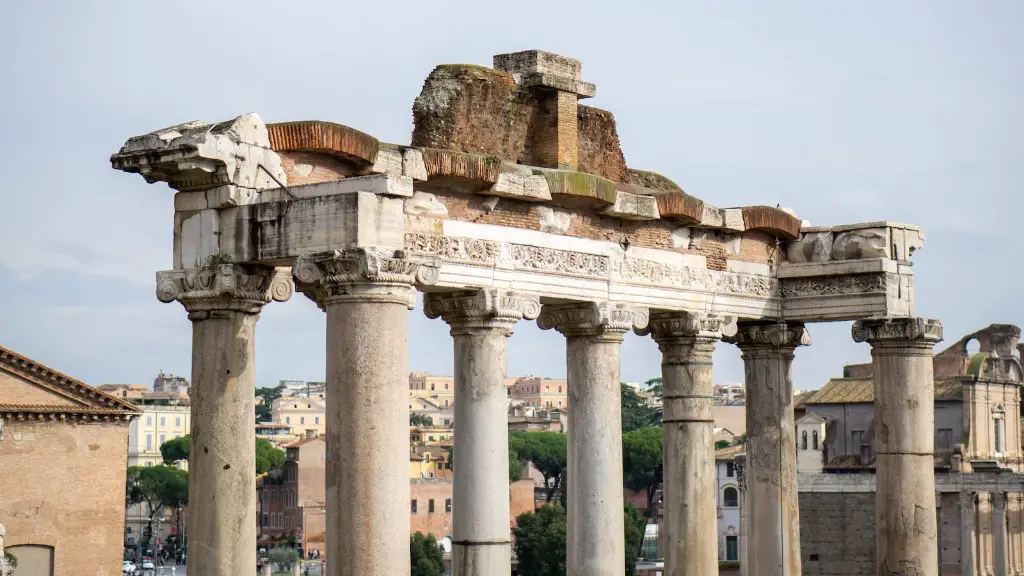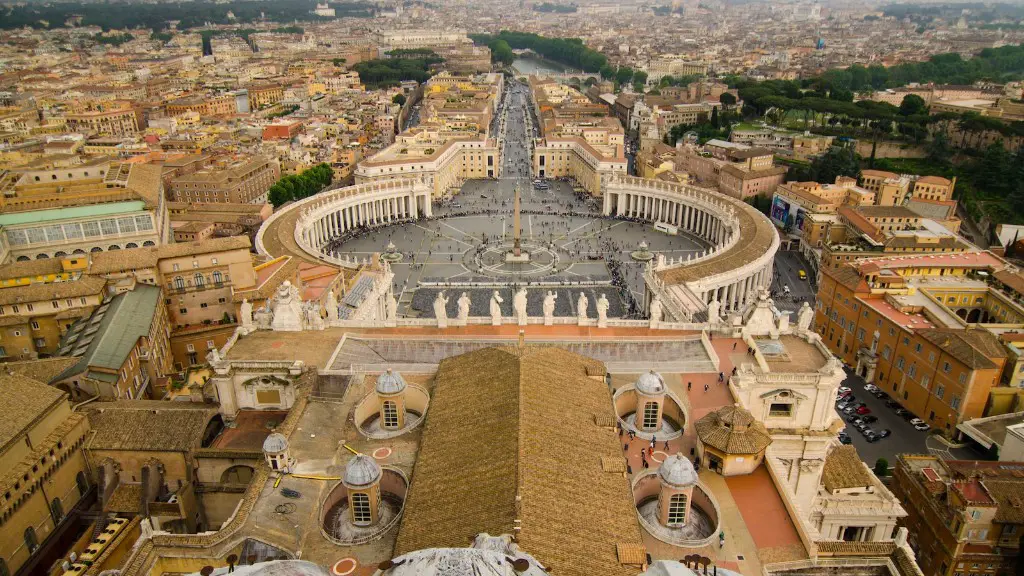Places to learn about Ancient Rome
Rome has a long and fascinating history, making it a wonderful place for anyone with an interest in learning about the past. For the curious and the passionate, Rome is an ideal destination for uncovering the authenticity of ancient times. Here is a guide to some of the top places to learn about Ancient Rome.
The Colosseum is the most iconic symbol of Ancient Rome, and it is a true marvel to behold. Constructed in the first century AD, the Colosseum was built to showcase some of the most bloody contests in history. With 80 entrances and incredible engineering achievements, it is no wonder why it still stands in awe today. It is possible to explore this famous landmark and feel the history that it is said to hold.
The Forum Romanum is the largest public area in Ancient Rome, and it tells the story of Roman culture, architecture, and political influences. Official meetings, public events and speeches were once held here, and it is still possible to walk through and take in the many monuments and ruins that remain. From the Arch of Septimius Severus to the Temple of Saturn, there are many fascinating sites of note.
The Pantheon, or the Temple of All Gods, is one of the best-preserved ancient structures in Rome. It was built as a temple in honor of the gods, but it later became a church in 609 AD. The Pantheon is famous for its huge portico and dome, which still stand in perfect condition today.
The National Roman Museum, MNR, contains some of the greatest examples of Roman artifacts. People can explore the wonder of the ancient Roman Empire through the display of statues, sculptures and fresco. It is a great way to get an authentic insight into the culture and style of Ancient Rome, as well as its customs.
The Capitoline Museums in Rome is home to one of the oldest art and history collections in the world. Here, people can find some of the earliest sculptures from the Renaissance era, as well as an impressive collection of Roman coins and medals. It is an ideal way to learn about the Roman Empire and its contributions to art, history and culture.
The Baths of Diocletian are considered one of the grandest thermae of the ancient world. The ruins may not be as opulent as they once were, but they still include part of the tepidarium, the caldarium and the palestra. It is believed that up to 3000 people visited the baths each day to use the facilities and socialize. The Baths of Diocletian offer an amazing insight into Roman every-day life.
The Catacombs of San Callisto, also known as St. Callixtus, are underground burial chambers and corridors known for hosting the remains of early Christian martyrs. The Catacombs of San Callisto provides an important insight into early Christian beliefs and customs, as well as their philosophy and spirituality.
Festivals Commemorating Ancient Rome
Sitting at the heart of Roman culture is the rich system of festivities and traditions that have been celebrated for centuries. The celebrations are a rich and lively way to experience the history and culture of Rome. Here is a guide to some of the top festivals commemorating Ancient Rome.
The Lupercalia Festival was one of the oldest festivals celebrated by Romans. It marks the beginning of spring and to honour the foundation of Rome. As part of the festivities, Roman men would sacrifice a goat, smear themselves with the goat’s blood and run through the city. The festival is still celebrated today, albeit with a little less goat-blood involved. It is a thrilling way to learn more about Roman customs.
Another historical feast is the Cerealia, which is held in honour of the Roman goddess of agriculture, Ceres. The festivities include plays, reenactments, banquets and parades. During the celebration, people would decorate their houses with bright flowers and specialties. It is a great way to learn about how Roman society celebrated the cycles of growth and life.
On the 15th of August, Romans celebrate the Festival of Vulcan, in honour of the god of fire. To commemorate the occasion, people would hold a torchlight procession, throw fireworks into the night sky and sing ancient songs of fire. This festival is a wonderful opportunity for anyone wishing to explore the beauty and power of the Roman gods.
The Roman Games is one of the oldest and most notorious events of the Roman Empire. They were large-scale events that included chariot-racing, sporting matches and animal exhibitions. They featured prominently in Roman society and were held honouring either gods or emperors. It is a great way to experience the enormity and wildness of the Roman Games in all their glory.
The Saturnalia festival was held over several days in honor of Saturn, the Roman god of agriculture. It was a time of great celebration and revelry. Festivities included decorations, music, parades and the exchange of gifts. It is an exciting way to learn how Romans celebrated the winter solstice and the coming of a new year.
The Roman Comedy Festival was a major event in the Roman calendar. It was the ancient equivalent of a modern-day film festival and involved performances by the top talent of the day. It was a fun and lively event for Romans even back then, and it is a great way to learn about the theatre, acting and art in Ancient Rome.
Art and Architecture from Ancient Rome
The magnificent art and architecture of Ancient Rome are just as remarkable today as they have been over the centuries. They are an incredible testament to the strength, creativity, and finesse of the Roman Empire. Here is a guide to some of the masterpieces of the past.
The Trajan Column is a masterpiece of the Roman period, built in 113 AD to commemorate the victory of Emperor Trajan in Dacia. It is 38 meters in height and decorated in scenes from the campaign. It is a highly impressive monument and a great way to learn about how Roman power was portrayed.
The Arch of Titus is an absolutely stunning monument that stands an impressive 18 meters high. Located in the center of Rome, it commemorates the victory of Emperor Titus in the First Jewish War. It is an incredible structure that is a great demonstration of Roman military power.
The Lighthouse of Ostia Antica is one of the best-preserved examples of a Roman lighthouse in existence. Located at the mouth of the Tiber River, it is an impressive feat of engineering that has endured and withstood the test of time. It is an important symbol and reminder of the power of Rome.
The Villa of the Mysteries is a beautiful and elegant villa in Pompeii that has been preserved since being destroyed by the eruption of Mount Vesuvius in 79 AD. It is a breathtaking example of Roman frescoes, and it also provides a fascinating account of domestic life among high-ranking Roman citizens.
The Pantheon is a remarkable achievement of Roman architecture, constructed in honour of the gods. It is known for its huge portico and incredible dome, and was said to be capable of holding up to 3000 people for each event. The size and grandeur of the Pantheon is an awesome accomplishment of Ancient Rome.
The Globe of Agrippa is an example of the advanced engineering of Ancient Rome. It was built to commemorate Agrippa’s victory in the Battle of Actium in 31 BC. It is a stunning example of mechanical ingenuity, and is a great way to learn about the genius of the Romans.
The Baths of Caracalla provide a unique insight into the technical capabilities of Ancient Rome. It was a grand public bathing complex that could hold up to 1600 people in its four main areas. It is a fascinating example of ancient technologies and engineering.
Education in Ancient Rome
Ancient Rome was an incredibly advanced society in many ways, and education was no exception. Education was one of the values instilled in Roman society from its earliest days, and Rome had an advanced educational system. Here is a guide to what education in Ancient Rome was like.
Education in Ancient Rome was highly focused on instilling the values of traditional Roman culture. Children were taught the basics, such as reading and writing, but there was also a great emphasis on teaching the art of rhetoric. The art of rhetoric was a major part of Roman education as it was used to influence public opinion and opinion leaders.
The education system in Ancient Rome was highly gender-segregated. Boys received a more formalised education that was focused on training them to enter into public life. Girls received an education, but it was more focused on domestic duties and skills, such as spinning and weaving.
In Ancient Rome, education was a privilege of the wealthy. Poorer Roman children had a limited education, if any at all. They did not receive the same instruction as those in the upper classes, nor did they receive the same opportunities for advancement.
Education in Ancient Rome also included physical training. All Roman men were expected to participate in military training and were also required to learn wrestling and fighting techniques. This form of education was a vital part of Roman culture as it taught boys and young men how to fight for their country and defend their citizens.
Education in Ancient Rome placed an emphasis on vocational education. This was a form of education that would teach young people the practical skills of a trade or profession. It was a way to prepare citizens for work or business opportunities, and it was considered a very important part of education in Ancient Rome.
The education system in Ancient Rome relied on the use of teachers, and most of the teachers were slaves. Slaves would teach their students the important skills and disciplines that would prepare them for public life. This system endured until the fall of the Roman Empire.
Religion in Ancient Rome
Religious beliefs and rituals were an integral part of Ancient Roman culture. In this section, we’ll examine the role of religion in Ancient Rome, the beliefs of its citizens and how it shaped the society of the time.
Religion was a major part of Roman life, and it was deeply intertwined with politics, law and social norms. It played an important role in both public and private life as Roman citizens were encouraged to take part in rituals and festivals to honour their gods.
Roman religion was heavily based on the practices and customs of the Greeks, although there were some unique beliefs as well. The Romans believed in many gods and goddesses who had different roles and functions to play. It was believed that by honouring and appeasing these gods, Roman citizens could ensure the safety, prosperity and success of the empire.
Roman religion also included two major religious practices: augury and sacrifice. Augury was the art of reading signs and omens in order to determine the will of the gods. Sacrifice was an important religious custom that was used to appease the gods and ensure an appropriate offering to them.
Religious life in Ancient Rome was often conducted in temples or sacred places called templa. Temples were seen as the dwelling-places of the gods, and were the sites of many important religious rituals and festivals. Here, citizens would gather to pray and make offerings, as well as celebrate important moments in history.
Roman religion was not a monotheistic faith, and instead was based around the veneration of many gods and goddesses. Religion was seen as a way to understand and control the world around them, and as a way to connect with the spiritual realm. This connection to the spiritual world was believed to bring good fortune and success.
Religion in Ancient Rome was an important part of the culture and shaped the way citizens lived their lives. It was an integral part of Roman life, and it still has a powerful influence on the culture of today.





